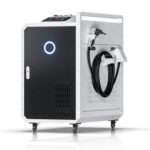I. Introduction to Prototype Development
II. Benefits of Prototype Development
III. Steps in Prototype Development Process
IV. How to Find Expert Help for Your Prototype Development Project
Have you ever had a great idea for a product but weren’t sure how to bring it to life? That’s where prototype development comes in! Whether you’re a seasoned entrepreneur or just starting out, creating a prototype is a crucial step in the product development process. In this article, we’ll explore the ins and outs of prototype development and how it can help turn your idea into a reality.
What is Prototype Development?
Prototype development is the process of creating a working model of your product idea. This model allows you to test and refine your concept before moving on to full-scale production. Think of it as a trial run for your product – a way to iron out any kinks and make sure it functions as intended.
There are different types of prototypes, ranging from simple sketches to complex, fully-functional models. The level of detail and functionality of your prototype will depend on your specific needs and goals. No matter the complexity, the key is to create something tangible that you can use to gather feedback, make improvements, and ultimately bring your product to market.
So, why is prototype development so important? Well, for starters, it allows you to test your idea in the real world without investing a lot of time and money. By creating a prototype, you can quickly identify any flaws or shortcomings in your design and make necessary adjustments. This iterative process can save you from costly mistakes down the line and increase your chances of success.
Additionally, having a prototype can help you communicate your vision more effectively to potential investors, partners, and customers. A physical model or working prototype is much more compelling than a simple description or drawing. It can help others understand the value of your idea and get them excited about its potential.
In short, prototype development is a crucial step in the product development process. It allows you to test, refine, and communicate your product idea effectively. Whether you’re working on a new invention, a consumer product, or a tech gadget, creating a prototype is a smart move that can help you bring your idea to life.
Benefits of Prototype Development
Hey there! Ready to dive into the world of prototype development and learn about all the awesome benefits it can bring? Let’s get started!
So, first things first, what exactly is a prototype? A prototype is essentially a preliminary model or version of a product that is created to evaluate its design, functionality, and usability before moving forward with full-scale production. Now, let’s talk about why prototype development is such a game-changer for businesses and innovators alike.
1. Visualizing Ideas
One of the major benefits of prototype development is that it allows you to bring your ideas to life in a tangible way. Instead of just imagining how your product will look and function, you can actually see and touch a physical representation of it. This not only helps you visualize your concept more clearly, but it also makes it easier for others to understand and provide feedback.
2. Testing and Refining
Prototypes are essential for testing and refining your product design. By creating a prototype, you can identify any potential flaws or issues early on in the development process, saving you time and money in the long run. You can conduct usability tests, gather feedback from stakeholders, and make necessary adjustments before finalizing your product design.
3. Attracting Investors and Customers
Having a prototype can be a powerful tool for attracting investors and customers. It shows that you are serious about your idea and have put in the time and effort to bring it to life. Investors are more likely to fund a project that has a tangible prototype, as it demonstrates the potential of your product. Similarly, customers are more likely to be interested in a product that they can see and touch before making a purchase.
4. Enhancing Communication
Prototypes serve as a common language for communication among team members, stakeholders, and users. Instead of relying solely on verbal descriptions or written documentation, you can use a prototype to convey your ideas more effectively. This helps to ensure that everyone is on the same page and working towards a shared vision.
So, there you have it! The benefits of prototype development are truly invaluable for anyone looking to bring their ideas to life and create successful products. Whether you’re a startup entrepreneur, a seasoned inventor, or a product designer, incorporating prototyping into your development process can make all the difference.
III. Steps in Prototype Development Process
So, you’ve got this fantastic idea for a new product, and you’re ready to bring it to life through prototype development. Exciting stuff! But where do you start? Let’s break down the steps in the prototype development process to help guide you through turning your concept into a tangible prototype.
1. Define Your Objectives
First things first, you need to clearly outline what you want to achieve with your prototype. What problem is your product solving? What are the key features it must have? Setting clear objectives will help you stay focused throughout the development process.
2. Research and Ideation
Research is crucial in prototype development. Dive deep into market trends, competitor products, and user feedback to gather insights that will inform your prototype design. Brainstorm ideas and concepts that align with your objectives, keeping user needs at the forefront.
3. Design and Planning
With a solid understanding of your objectives and research insights, it’s time to start designing your prototype. Sketch out rough concepts, create wireframes, and develop a detailed plan for how your prototype will function. Consider usability, aesthetics, and functionality in your design process.
4. Prototype Development
Now comes the hands-on part – building your prototype. Depending on the complexity of your product, this step may involve 3D printing, coding, or assembling physical components. Iterate on your design as needed, testing and refining the prototype to ensure it meets your objectives.
5. Test and Iterate
Testing is a crucial step in prototype development. Gather feedback from potential users, stakeholders, and experts to identify areas for improvement. Use this feedback to iterate on your prototype, making necessary adjustments to enhance its functionality and user experience.
6. Refine and Finalize
Once you’ve iterated on your prototype based on testing feedback, it’s time to refine and finalize your design. Fine-tune details, make any last-minute changes, and ensure that your prototype is ready for presentation or further development.
7. Present and Pitch
Congratulations, you’ve made it to the final step! Present your prototype to key stakeholders, investors, or potential customers. Highlight the problem it solves, its unique features, and the user feedback that informed its development. Use your prototype as a powerful tool to pitch your product and generate interest in its future.
Remember, the prototype development process is a journey that requires patience, creativity, and strategic thinking. By following these steps and staying open to feedback and iteration, you’ll be well on your way to bringing your product idea to life. Good luck!
How to Find Expert Help for Your Prototype Development Project
So, you have a fantastic idea for a new product and you’re ready to bring it to life through prototype development. Congratulations! This is an exciting time, but it’s also essential to find the right experts to help you turn your vision into reality. Here are some tips on how to find the best help for your prototype development project:
1. Do Your Research
Start by doing some research to find companies or professionals who specialize in prototype development. Look for reviews, testimonials, and examples of their work to get a sense of their expertise and track record. You want to make sure you’re working with a trusted and experienced team.
2. Ask for Recommendations
Reach out to your network and ask for recommendations. If you know someone who has gone through the prototype development process before, talk to them about their experience and see if they have any suggestions for you. Personal recommendations can be invaluable in finding the right help for your project.
3. Look for Customization
When choosing a prototype development partner, look for a company that can offer customized solutions based on your specific needs and goals. Each project is unique, so you want to work with a team that can tailor their approach to fit your vision and requirements.
4. Check for Communication Skills
Communication is key in any successful partnership, especially when it comes to prototype development. Make sure the team you choose is responsive, transparent, and able to effectively communicate with you throughout the entire process. This will help ensure that your vision is understood and executed correctly.
5. Consider Budget and Timeline
Before committing to a prototype development partner, make sure to discuss budget and timeline expectations. You want to work with a team that can deliver quality results within your specified timeframe and budget. Be clear about your expectations upfront to avoid any surprises down the line.
6. Trust Your Instincts
Finally, trust your instincts when choosing a prototype development partner. If something doesn’t feel right or if you have any doubts, it’s okay to keep looking for a better fit. Your gut feeling can often guide you in the right direction when it comes to making important decisions for your project.
By following these tips, you can find the expert help you need to bring your prototype development project to life. Remember to take your time, do your research, and trust your instincts to ensure a successful and fulfilling collaboration. Good luck on your prototype development journey!










Comments